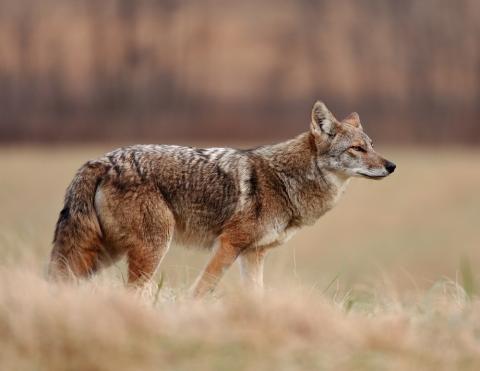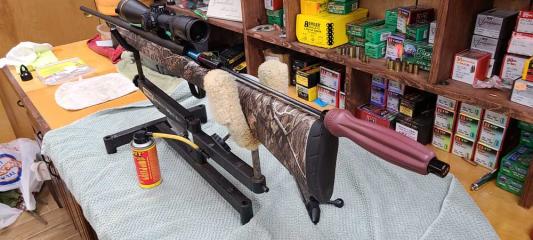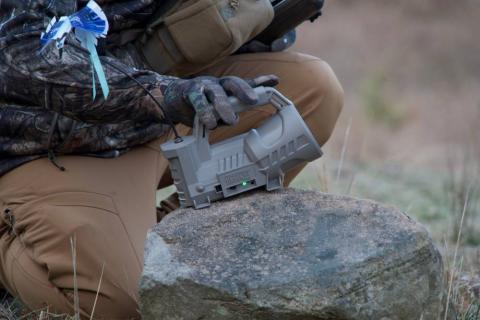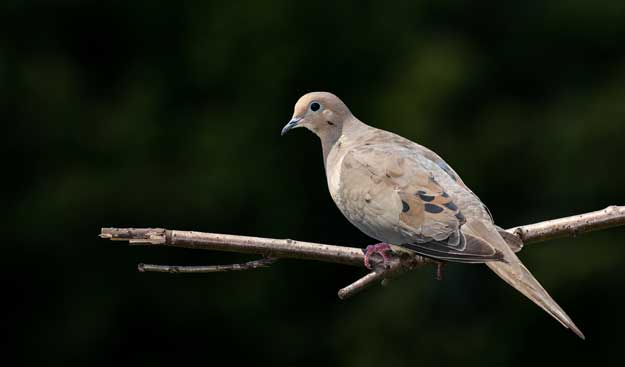
I presented the notion of calling to doves to a good friend of mine David Hale, a co-founder of Knight and Hale Game Calls in Cadiz, Kentucky, who told me:
"Sure, you can call doves. I blow on a round, wooden owl hooter while covering the front hole of the call and then releasing it. The hooter gives the perfect cooing sound made by the doves. I've called in plenty of doves on the owl hooter especially in roosting areas. If the doves can see and hear what resembles other doves, they have to come and investigate."
I set out my decoys and when I spotted doves approaching, I began to give calls on the owl hooter like Hale had taught me. The doves responded to the calling and the decoys. Just like waterfowl, the doves would bank, turn and come in to my spread.
Decoying and calling doves really became exciting. Although I knew I hadn't mastered calling, I found out I could work mourning doves in to range. And the satisfaction that came from good calling and decoying welled-up inside me. I realized that I could work doves around water in the same way that I could work waterfowl over water.
I consulted my longtime hunting friend Harold Knight, the other co-founder of Knight and Hale Game Calls, who told me:
"When you take a stand under a tree, place at least two of the decoys on the same limb sitting side by side. If you'll look at doves when they sit in a tree, you almost always see two birds sitting close together on the same limb. So if you want to use your decoys effectively, place them to look as lifelike as possible."
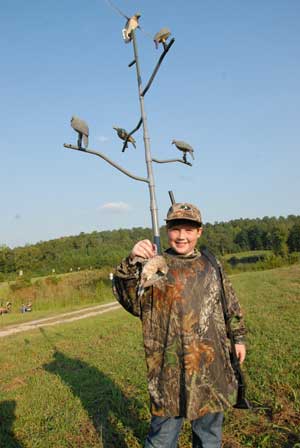 When I tried decoying doves in to my favorite tree, I set two of the decoys side by side as Knight had suggested. Backing off and looking at my setup, the scene did appear much more natural than having birds scattered all over the tree. After putting the decoys out, I moved in close to the trunk of the tree to look for incoming birds. When I saw doves passing close by, I cooed on the owl hooter and watched what happened to the doves. Although I couldn't say for sure whether the calling or the decoying worked most effectively, by using decoys and calls, I brought in more doves than if I simply had sat down next to a tree and prayed that doves would fly overhead.
When I tried decoying doves in to my favorite tree, I set two of the decoys side by side as Knight had suggested. Backing off and looking at my setup, the scene did appear much more natural than having birds scattered all over the tree. After putting the decoys out, I moved in close to the trunk of the tree to look for incoming birds. When I saw doves passing close by, I cooed on the owl hooter and watched what happened to the doves. Although I couldn't say for sure whether the calling or the decoying worked most effectively, by using decoys and calls, I brought in more doves than if I simply had sat down next to a tree and prayed that doves would fly overhead.
I soon learned that the decoys and calling would lure birds in to hunters around water and roosting trees, so I incorporated calling and decoying into my dove hunt plan and tried these two tactics in other locations.
If you observe doves, you'll also notice that they like to sit and rest on the edges of fences. Putting decoys on fences makes luring the doves in relatively easy. However, the kinds of fences that doves like to light on generally cross open fields where no trees or bushes grow. Then the hunter has a hard time finding a place to hide so the doves won't spot him when they come in to his calling. I don't utilize fences for decoying doves unless a ditch runs at the edge of the fence where I can hide or unless the fence goes across the top of a hill behind which I can hide. If a dove can see the decoys, it also can spot a hunter, unless the sportsman hides well, or a backdrop of bushes breaks up his silhouette.
A roosting area provides the easiest place to decoy doves. In the South, doves like to roost in cedar thickets. By putting the decoys on the outer edge of a cedar thicket and then blowing on my owl hooter, I can encourage most of the doves that want to roost to fly in right over my decoys. Many times, the doves will come in, begin to cup their wings and look for a place to light right beside the decoys. So, when I set up a roost spread, I don't take a stand under the decoys. I move 20 yards away from the decoys and watch the birds work into my spread.
Waterfowl tactics for dove hunting, like calling and decoying doves, has been beneficial when the opening day survivors get a little wiser.

















